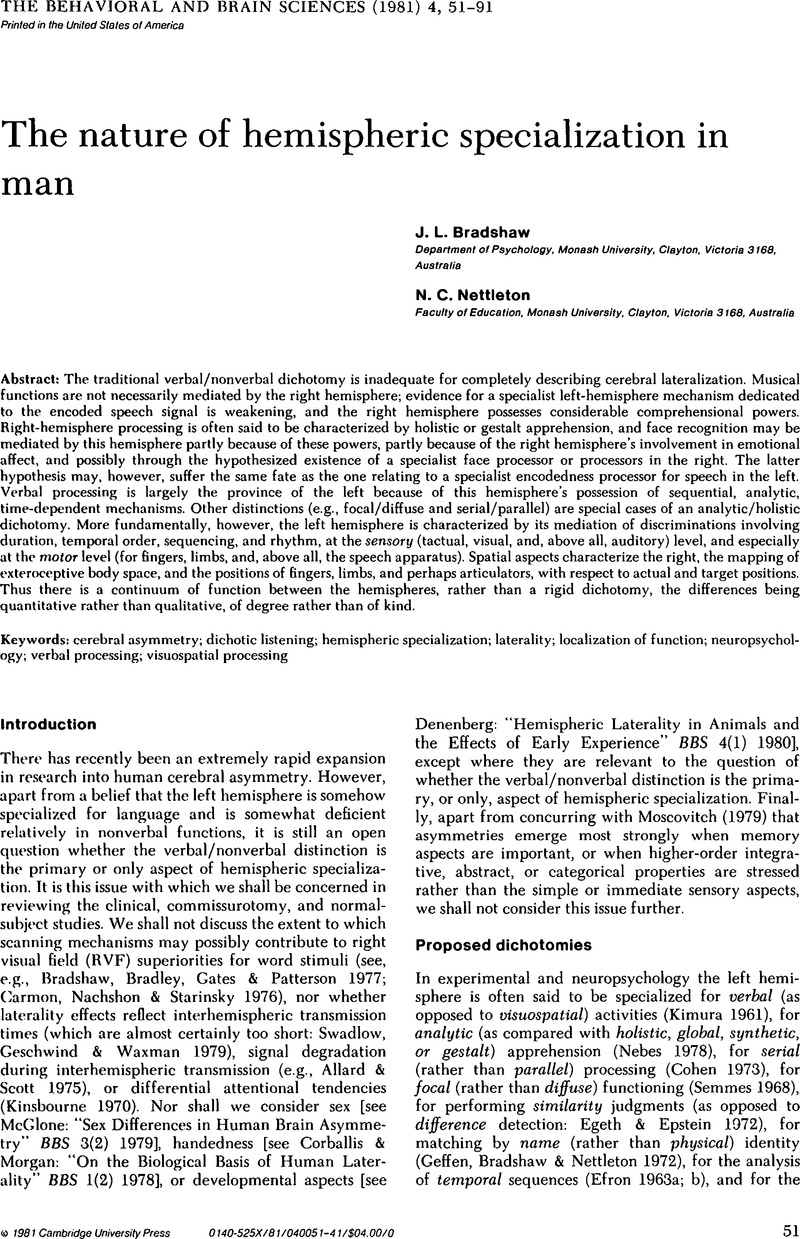Crossref Citations
This article has been cited by the following publications. This list is generated based on data provided by Crossref.
Moscovitch, Morris
1983.
Local versus global solutions to problems of hemispheric specialization.
Behavioral and Brain Sciences,
Vol. 6,
Issue. 3,
p.
520.
Bradshaw, John L.
and
Nettleton, Norman C.
1983.
Hemispheric specialization: Return to a house divided.
Behavioral and Brain Sciences,
Vol. 6,
Issue. 3,
p.
528.
YOUNG, GERALD
BOWMAN, JAMES G.
METHOT, CAROLE
FINLAYSON, MARY
QUINTAL, JANET
and
BOISSONNEAULT, PAUL
1983.
Manual Specialization and the Developing Brain.
p.
119.
Bogen, J. E.
and
Bogen, G. M.
1983.
Hemispheric specialization and cerebral duality.
Behavioral and Brain Sciences,
Vol. 6,
Issue. 3,
p.
517.
Zaidel, Eran
1983.
Advances and retreats In laterality research.
Behavioral and Brain Sciences,
Vol. 6,
Issue. 3,
p.
523.
Sergent, Justine
1983.
The analytic/holistic dichotomy: An epiphenomenon.
Behavioral and Brain Sciences,
Vol. 6,
Issue. 3,
p.
521.
Bradshaw, John L.
1985.
Reading and the right hemisphere.
Behavioral and Brain Sciences,
Vol. 8,
Issue. 2,
p.
367.
Zaidel, Eran
and
Schweiger, Avraham
1985.
Right-hemisphere reading: A case of “déjà lu”.
Behavioral and Brain Sciences,
Vol. 8,
Issue. 2,
p.
365.
Coltheart, Max
1985.
Right-hemisphere reading revisited.
Behavioral and Brain Sciences,
Vol. 8,
Issue. 2,
p.
363.



